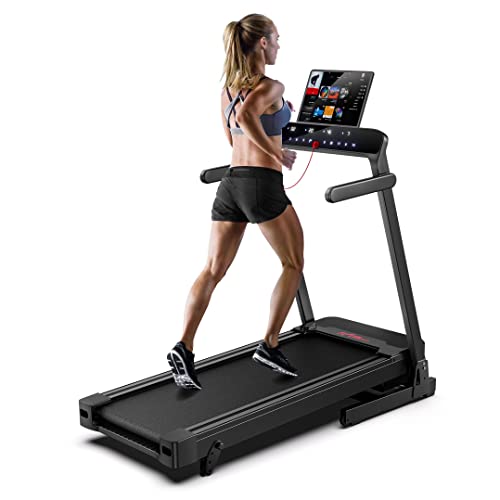The 10 Most Terrifying Things About New Treadmill
The Essential Guide to Buying a New Treadmill: What You Need to Know
As fitness enthusiasts continue to seek flexible and effective ways to keep their physical health, treadmills remain a staple in home and commercial health clubs alike. The innovation and functions of treadmills have actually advanced considerably in recent years, making now an exceptional time to consider investing in a new treadmill. This post intends to guide prospective purchasers through vital aspects to think about, various types of treadmills readily available, and regularly asked questions to ensure they make an informed choice.
Understanding Treadmill Types
Before delving into particular brand names, it's worth understanding the main kinds of treadmills readily available in the market. This introduction will help people determine which type best fits their fitness needs and budget plan.
1. Handbook Treadmills
- Description: These treadmills do not count on electrical energy and are powered exclusively by the user's movement.
- Pros:
- Generally less pricey.
- Compact and lightweight, making them easy to shop.
- Cons:
- Limited features compared to motorized treadmills.
- Less suitable for high-intensity exercises.
2. Motorized Treadmills
- Description: These treadmills come equipped with electric motors that facilitate movement and permit adjustable speed settings.
- Pros:
- Offer a wide variety of speed and incline alternatives.
- Typically equipped with sophisticated innovation, including workout programs and heart rate screens.
- Cons:
- More costly and require more upkeep.
- Much heavier, making them hard to move.
3. Folding Treadmills
- Description: These treadmills can be folded for benefit, making them an excellent choice for those with limited space.
- Pros:
- Space-saving design.
- Still provides motorized options.
- Cons:
- May sacrifice some stability and resilience for portability.
4. Business Treadmills
- Description: Designed specifically for gyms and gym, these treadmills are built with more resilient products.
- Pros:
- High-quality construction and longevity.
- Functions created for intensive use.
- Cons:
- Generally more costly and larger in size.
Comparison Table of Treadmill Types
Treadmill Type
Power Source
Secret Features
Rate Range
Ideal For
Manual
None
Basic functionality
₤ 100 – ₤ 500
Newbies, spending plan users
Motorized
Electric
Adjustable speed/incline
₤ 500 – ₤ 3,000
All fitness levels
Folding
Electric
Space-saving functions
₤ 300 – ₤ 1,500
Limited area users
Industrial
Electric
Sturdiness and efficiency
₤ 1,500 – ₤ 8,000
Health clubs, heavy use
Key Features to Look For
When acquiring a new treadmill, numerous key functions ought to be considered:
Motor Power (HP): A more effective motor (at least 2.5 HP) is essential for running and for users who prepare to use the treadmill frequently.
Running Surface: Consider the size of the belt. A longer and wider running surface can accommodate longer strides and provides much better security.
Slope Options: Adjustable incline can add intensity to exercises and target various muscle groups.
Workout Programs: Many treadmills offer integrated workout programs that can assist users through different exercises and routines.
Display Features: A clear screen makes it possible for users to track their speed, range, calories burned, and heart rate more quickly.
Cushioning: Adequate shock absorption can lower the threat of injury and offer a more comfortable running experience.
Innovation Integration: Features like Bluetooth connection, mobile app integration, and built-in speakers can improve the exercise experience.
Often Asked Questions (FAQs)
Q1: How much should I budget for a treadmill?
A: Budget can differ based on features and quality. related begin around ₤ 100, while motorized models can vary from ₤ 500 to ₤ 3,000, depending upon innovative functions.
Q2: How often should I keep my treadmill?
A: Regular maintenance, consisting of oiling the belt and examining the motor, need to be done monthly. Examine the treadmill for wear and tear regularly.
Q3: Can I drop weight with a treadmill?
A: Yes, regular usage of the treadmill, combined with a healthy diet plan, can assist with weight reduction. Including interval training increases intensity and calorie burn.
Q4: Is it better to operate on a treadmill or outdoors?
A: Both have benefits. Treadmills provide a controlled environment and cushioning, while outdoor running deals varied surroundings and natural inclines.
Q5: Do I need special shoes for utilizing a treadmill?
A: While particular treadmill shoes aren't necessary, wearing good-quality running shoes developed for support, cushioning, and stability is suggested.
Purchasing a new treadmill can significantly affect one's fitness journey, providing chances to exercise in the house regardless of climate condition. By understanding the kinds of treadmills offered and considering important functions, individuals can choose a model that fits their way of life and fitness goals. Whether aiming for casual strolls or intense running sessions, the ideal treadmill can transform workout regimens, making them more enjoyable and effective. With the increase in technology and ingenious styles, the treadmill remains a timeless and important tool in individual fitness.
